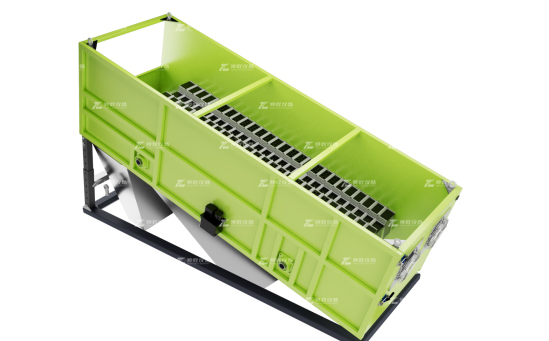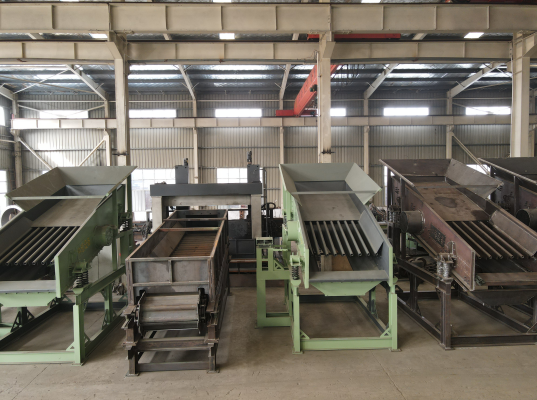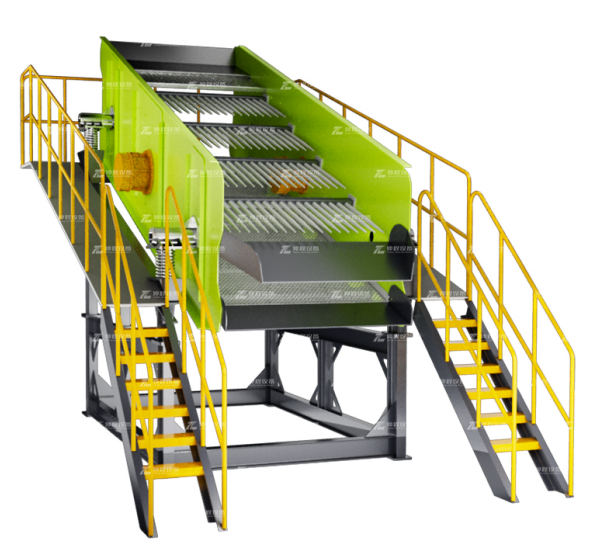Disc Screen in Waste Sorting
In the realm of waste sorting, efficient separation technologies are crucial for recycling processes. Among these technologies, the disc screen stands out as a versatile tool used to sort mixed waste streams. This article delves into the workings of a disc screen, its advantages, and provides a comparative analysis with another popular screening device—the bouncing screen.

Detailed Introduction of Disc Screen:
A disc screen, also known as a star screen or shaft screen, is a type of mechanical separator that uses rotating discs mounted on parallel shafts to segregate materials based on size. The spacing between the discs can be adjusted according to the required particle size to be screened out. As material passes over the rotating discs, smaller particles fall through the gaps while larger items are carried forward by the motion of the discs. This method allows for an effective sorting process that can handle various types of waste, including municipal solid waste, construction debris, and commercial refuse.
Advantages of Disc Screen:
1. Adjustable Spacing: The distance between discs can be modified, making it adaptable to different sorting needs.
2. Continuous Operation: Due to its design, a disc screen can operate continuously without clogging, ensuring a steady throughput.
3. Gentle Handling: The rotational movement minimizes damage to fragile materials during the sorting process.
4. Low Maintenance: With fewer moving parts compared to other screens, maintenance requirements are reduced.

Comparison with Bouncing Screen:
While both disc screens and bouncing screens aim to separate waste, they do so using fundamentally different mechanisms which cater to varying applications:
1. Screening Mechanism:
- Disc Screen: Employs fixed or adjustable disc spacings to allow certain sizes of material to pass through.
- Bouncing Screen: Utilizes a dynamic motion where materials bounce on a perforated surface, allowing smaller particles to fall through while larger ones remain on top.
2. Material Handling:
- Disc Screen: Better suited for separating lighter, flatter, or more two-dimensional objects from three-dimensional objects.
- Bouncing Screen: More effective at separating materials based on weight and density rather than shape or size.
3. Efficiency:
- Disc Screen: Generally offers higher efficiency in separating fine fractions due to its precise sizing capabilities.
- Bouncing Screen: May be less accurate for fine separations but excels in handling wetter or stickier materials that might otherwise clog other types of screens.

4. Maintenance:
- Disc Screen: Requires minimal maintenance due to simpler mechanics.
- Bouncing Screen: Can require more frequent cleaning and adjustment to maintain optimal performance, especially in environments with high moisture content.
Both disc screens and bouncing screens play integral roles in modern waste management systems. Choosing between them depends on the specific characteristics of the waste stream being processed, the desired output, and operational considerations such as maintenance and cost. Understanding the strengths and limitations of each technology helps facilities optimize their sorting processes for greater efficiency and sustainability.
-
 Trommel screenTrommel screen, also known as drum screens, are widely used in various industries for sorting and separating materials.Get Quote
Trommel screenTrommel screen, also known as drum screens, are widely used in various industries for sorting and separating materials.Get Quote -
 Crop straw double shaft shreddApplications:Biomass Energy Production: Shredded straw can be used as a feedstock for bioenergy plants to produce electricity or heat.Livestock Feed: Reduced-si...Get Quote
Crop straw double shaft shreddApplications:Biomass Energy Production: Shredded straw can be used as a feedstock for bioenergy plants to produce electricity or heat.Livestock Feed: Reduced-si...Get Quote -
 Zhongcheng Air Drum SeparatorAir drum separators effectively separate lightweight materials (e.g., plastics, paper) from heavier materials (e.g., metals, glass). This high efficiency is cru...Get Quote
Zhongcheng Air Drum SeparatorAir drum separators effectively separate lightweight materials (e.g., plastics, paper) from heavier materials (e.g., metals, glass). This high efficiency is cru...Get Quote
-
2024-07-16Twin-shaft shredders: ideal for efficient processing of waste and recycling materialsA double-shaft shredder is a mechanical device used to process waste and recycle materials. Its main feature is that it has two rotating shafts with serrated bl...
-
2024-04-13Vibrating FeederA vibrating feeder is a mechanical device used to convey materials, typically in bulk, from one location to another in a controlled manner. This equipment is co...
-
2024-07-12Crush to Create: The Ultimate Eco-Friendly Plastic Shredder RevolutionThe working principle of a plastic shredder is mainly to tear large plastic materials into small pieces or fragments through mechanical force, in order to facil...
-
2023-01-18RDF Making MachineRDF (Refuse Derived Fuel) making machine is a specialized equipment used in waste management and energy recovery processes. Its primary function is to convert v...
-
2024-06-07Zhongcheng Air Drum Separator in MSWAir drum separators effectively separate lightweight materials (e.g., plastics, paper) from heavier materials (e.g., metals, glass). This high efficiency is cru...



